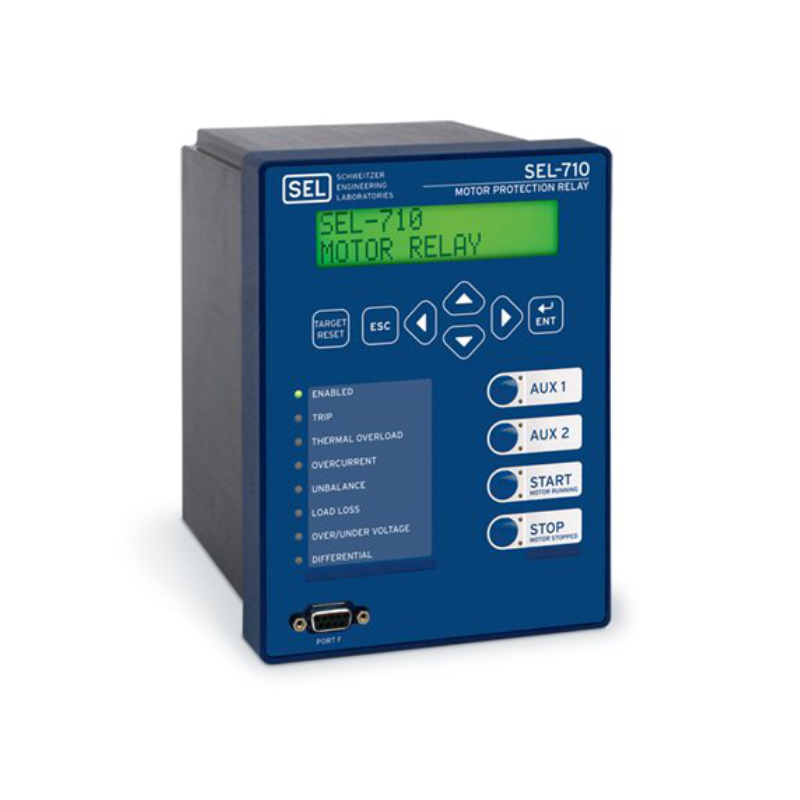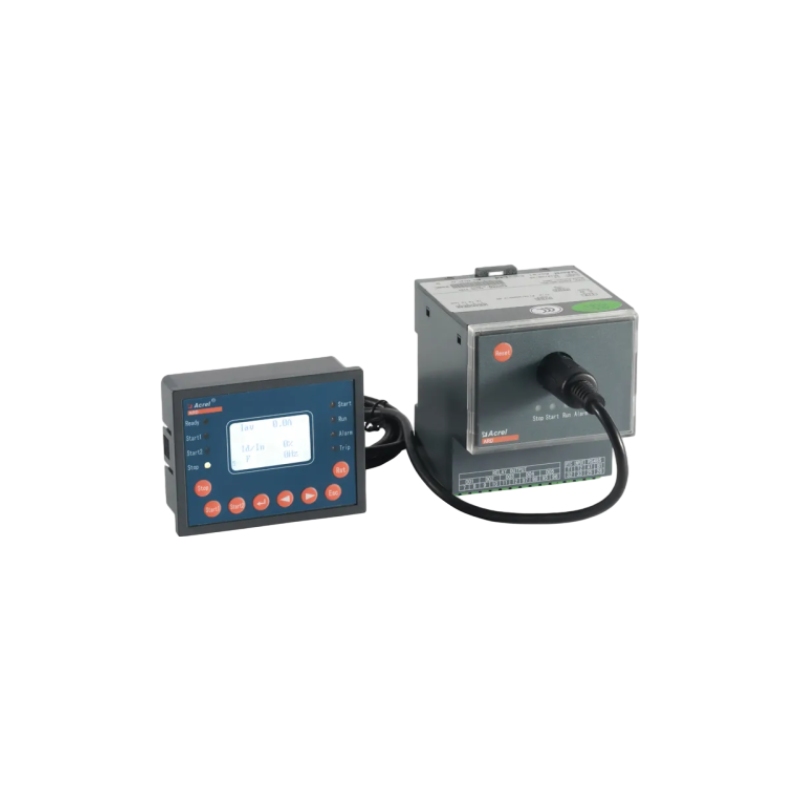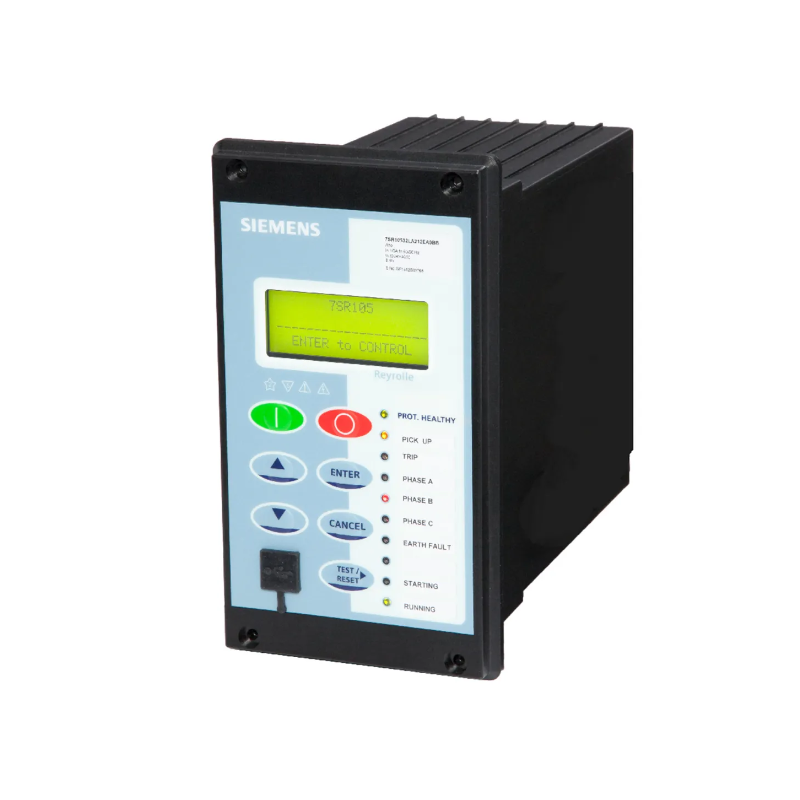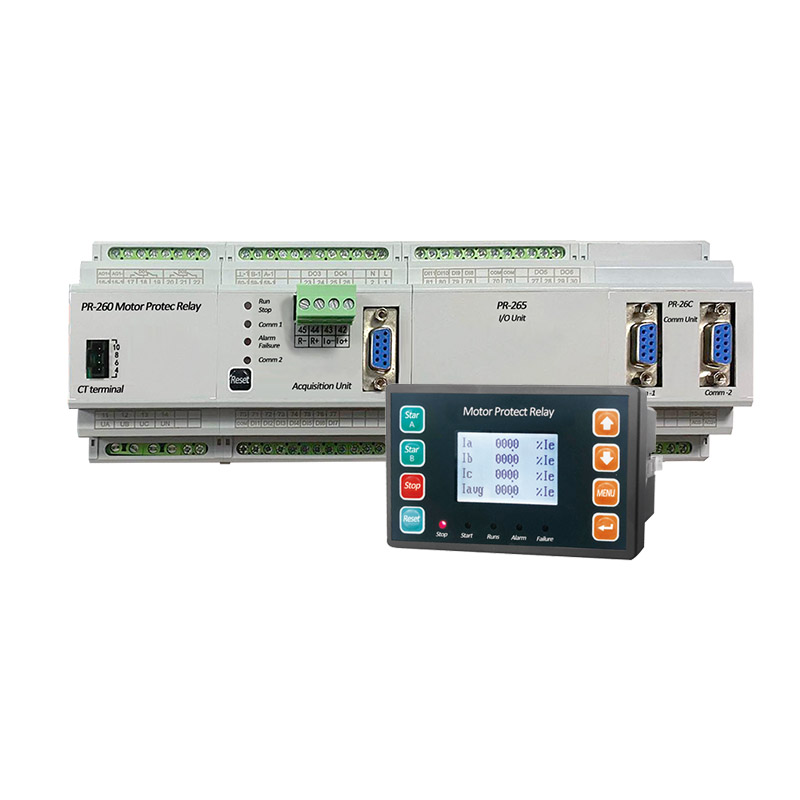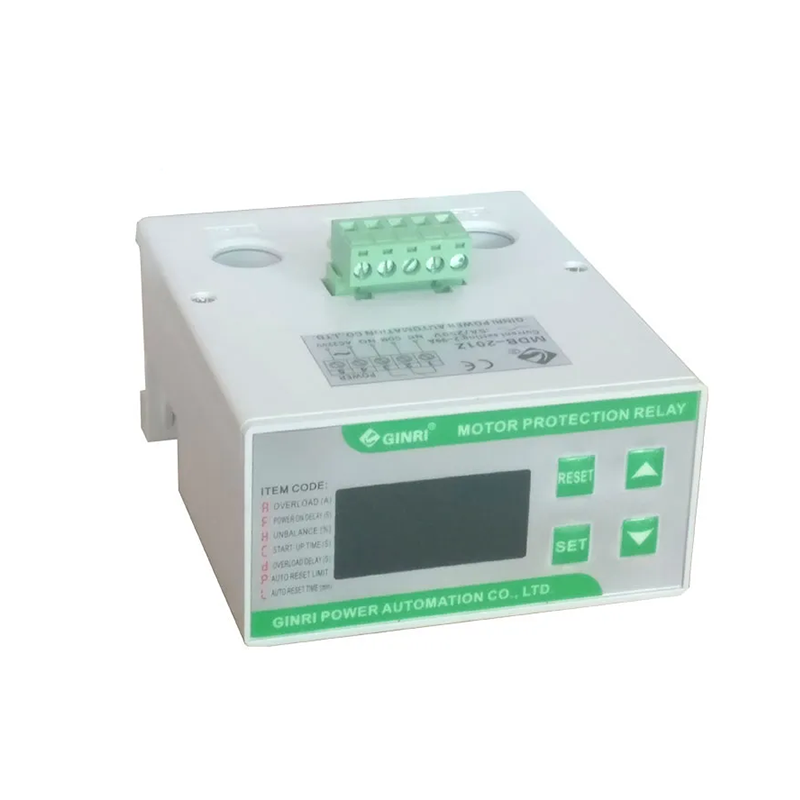Features of SEL Motor Protection Relay
- To get the maximum safe start times with complete motor protection, calculate the thermal energy in the motor. Reducing the interval between starts is another benefit of accurate temperature monitoring.
- Utilize the front panel’s four programmable pushbuttons for fast, customized control, which includes the start and stop features set by the factory.
- Offer protection against overcurrent, thermal overload, undercurrent, current imbalance, current differential, phase loss, ground fault, and much more.
- Select between Modbus® TCP, IEC 61850, Modbus Serial, EIA-232, EIA-485, Telnet, and FTP protocols, as well as single or dual copper or fiber-optic Ethernet. Select one or more connections, such as numerous Modbus sessions, for your application’s unique configuration.
- Apply the SEL-710 Motor Protection Relay in extreme conditions, with an operating temperature range of –40° to +85°C (–40° to +185°F). The SEL-710 is designed and tested to exceed applicable standards, including those for
- vibration, electromagnetic compatibility, and adverse environmental conditions.
Specification of SEL Motor Protection Relay
AC Current Inputs :5 A or 1 A phase and 5 A, 1 A, or 2.5 mA (high sensitivity) neutral, depending on model
AC Voltage Inputs :300 Vac continuous, 600 Vac for 10 seconds
Output Contacts:The relay supports Form A, B, and C outputs.
Pickup and Dropout Times :Pickup time:
≤8 ms for standard output contact
<50 μs (resistive load) for hybrid output contact
Dropout time: ≤8 ms for standard output contact ≤8 ms (resistive load) for hybrid output contact
Optoisolated Control Inputs :DC/AC control signals: 250, 220, 125, 110, 48, or 24
Frequency and Phase Rotation: System frequency: 50, 60 Hz
Phase rotation: ABC, ACB
Frequency tracking: 20–70 Hz
Power Supply: 110–250 Vdc or 110–240 Vac
Input voltage range: 85–300 Vdc or 85–264 Vac
24–48 Vdc
Input voltage range: 19.2–60 Vdc
Operating Temperature: –40° to +85°C (–40° to +185°F)

